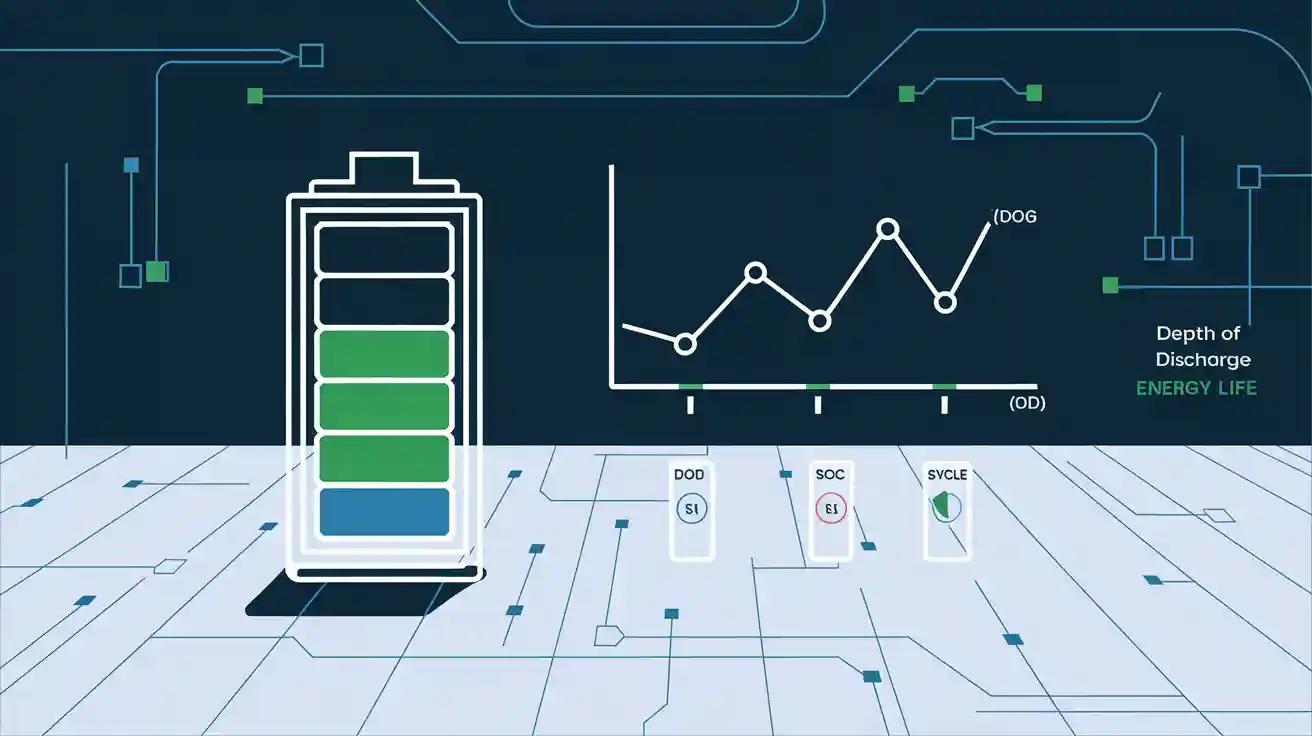
Définition en une phrase
Depth of Discharge (DoD) is the percentage of a battery’s total capacity that has been used during a discharge cycle, serving as a critical metric for battery performance, lifespan, and safety.
Explication détaillée
DoD quantifies how much energy has been drawn from a battery relative to its full capacity. For example, if a 10 kWh battery has delivered 8 kWh, its DoD is 80%. DoD is the complement of State of Charge (SoC): DoD = 100% – SoC. Managing DoD is essential because deeper discharges (higher DoD) generally reduce the total number of cycles a battery can endure before significant capacity loss. Modern Battery Management Systems (BMS) monitor and control DoD in real time to prevent over-discharge, optimize battery health, and ensure safety (Hinen, Wikipedia).
Key Components of DoD
- Chimie de la batterie : Different types of batteries have different optimal DoD ranges. Lithium-ion batteries can typically sustain 80–90% DoD, while lead-acid batteries are best kept at 30–50% DoD to maximize lifespan (Unik Batteries).
- Durée du cycle : The deeper the discharge, the fewer cycles a battery can complete. For instance, a lithium-ion battery may achieve 3,000–5,000 cycles at 80% DoD, but over 8,000 cycles at 50% DoD (Renogy).
- Système de gestion de la batterie (BMS) : BMS technology is crucial for monitoring DoD, preventing over-discharge, and balancing cell performance, especially in advanced lithium battery packs.
- Environmental Factors: Temperature and load profiles affect how much DoD a battery can safely handle. Extreme temperatures can accelerate degradation at high DoD.
Applications dans le monde réel
- Electric Vehicles (EVs): High DoD (70–90%) is often used to maximize driving range, with BMS ensuring safe operation.
- Renewable Energy Storage: In solar+storage systems, DoD is managed to balance usable energy and battery longevity. For example, Yungbang’s custom lithium battery packs for smart home and industrial applications are specified with DoD limits in datasheets to maximize cycle life and meet international standards.
- Équipement industriel : Proper DoD management reduces operational costs and extends battery replacement intervals in heavy-duty applications.
Concepts connexes
- State of Charge (SoC): The inverse of DoD, indicating the remaining battery capacity.
- Durée du cycle : The total number of charge/discharge cycles a battery can complete before its capacity drops below a usable threshold.
- Taux C : The rate at which a battery is charged or discharged, affecting DoD and cycle life.
- Système de gestion de la batterie (BMS) : The electronic system that manages DoD, SoC, and overall battery health.
Aides visuelles
- DoD vs. SoC Chart:

- Cycle Life vs. DoD Curve:

Best Practices
- Always follow manufacturer-recommended DoD limits for your battery chemistry.
- Use a BMS for real-time DoD monitoring and protection.
- Avoid frequent deep discharges unless your battery is designed for it.
- Size your battery system to minimize high DoD cycles for longer service life.
Yungbang Product Integration
Yungbang’s lithium battery solutions are engineered with advanced BMS and strict DoD management, ensuring optimal cycle life, safety, and compliance with international standards. For custom battery solutions tailored to your application, learn more about Yungbang.
Explore more: State of Charge (SoC) | Cycle de vie | Système de gestion de la batterie (BMS)

